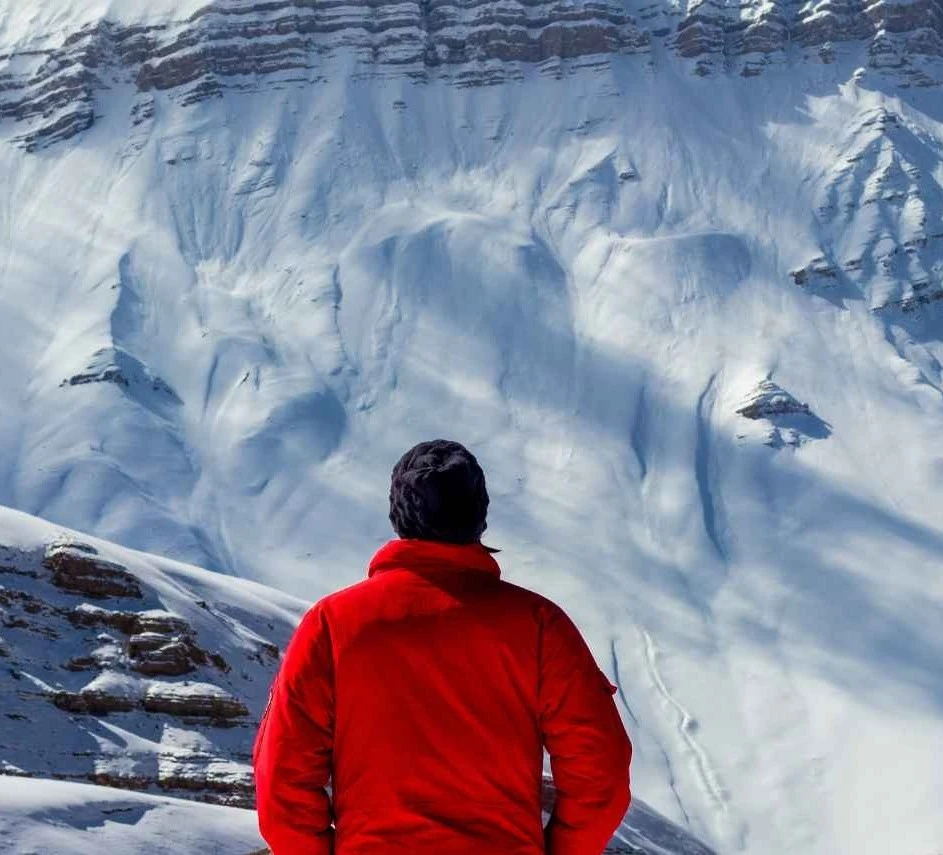
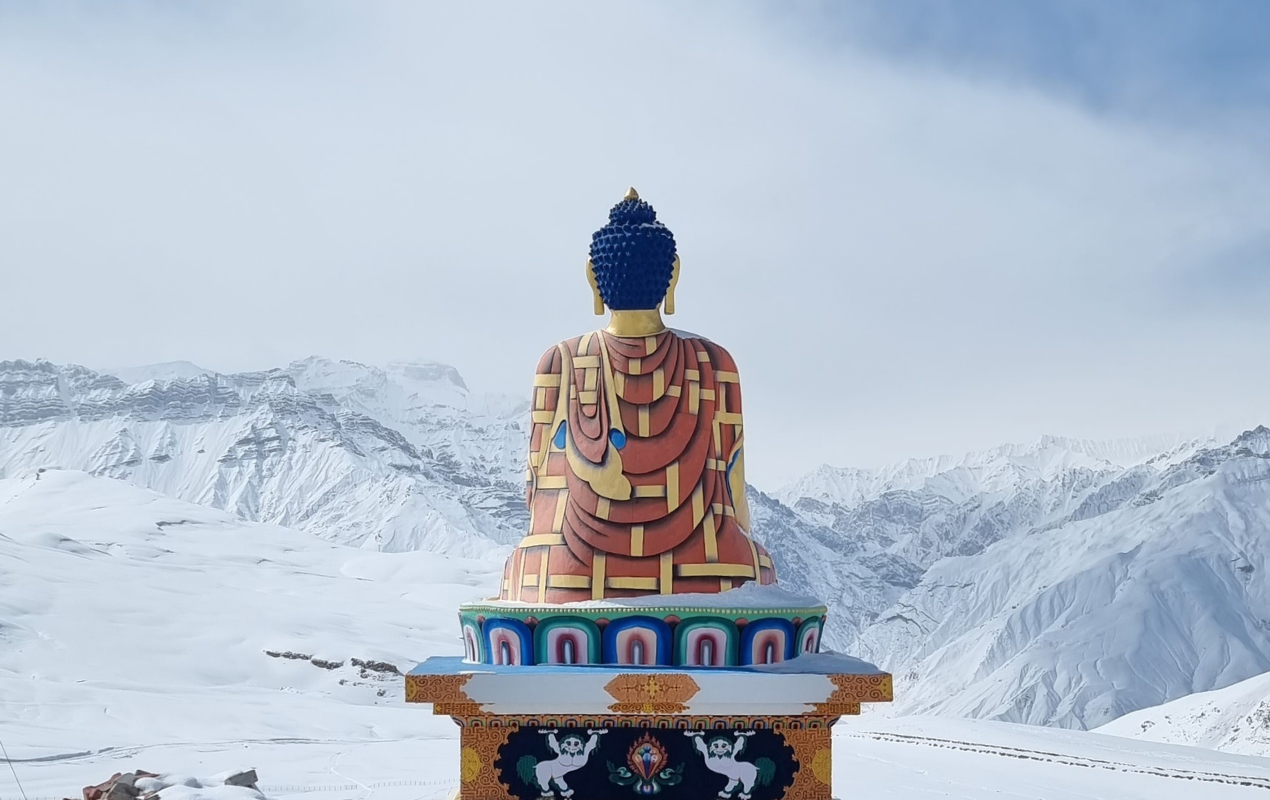
.jpg)
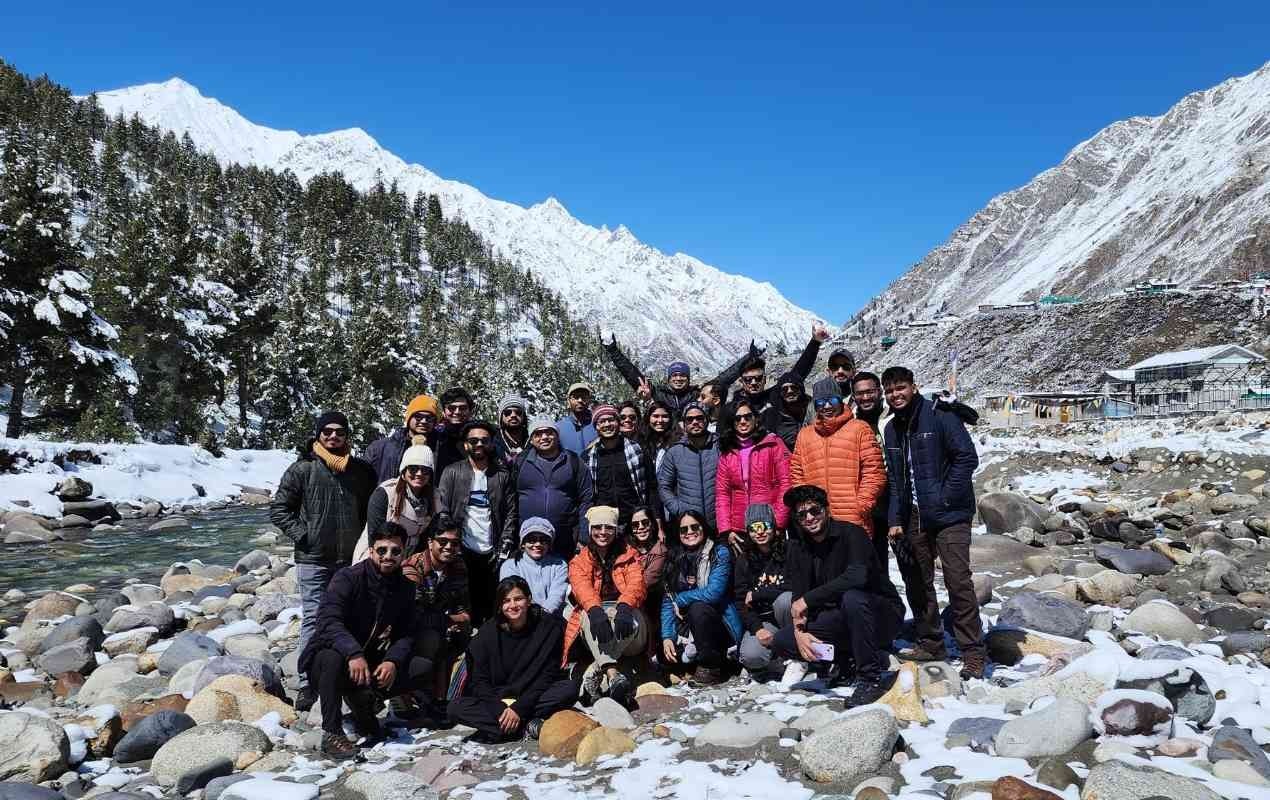
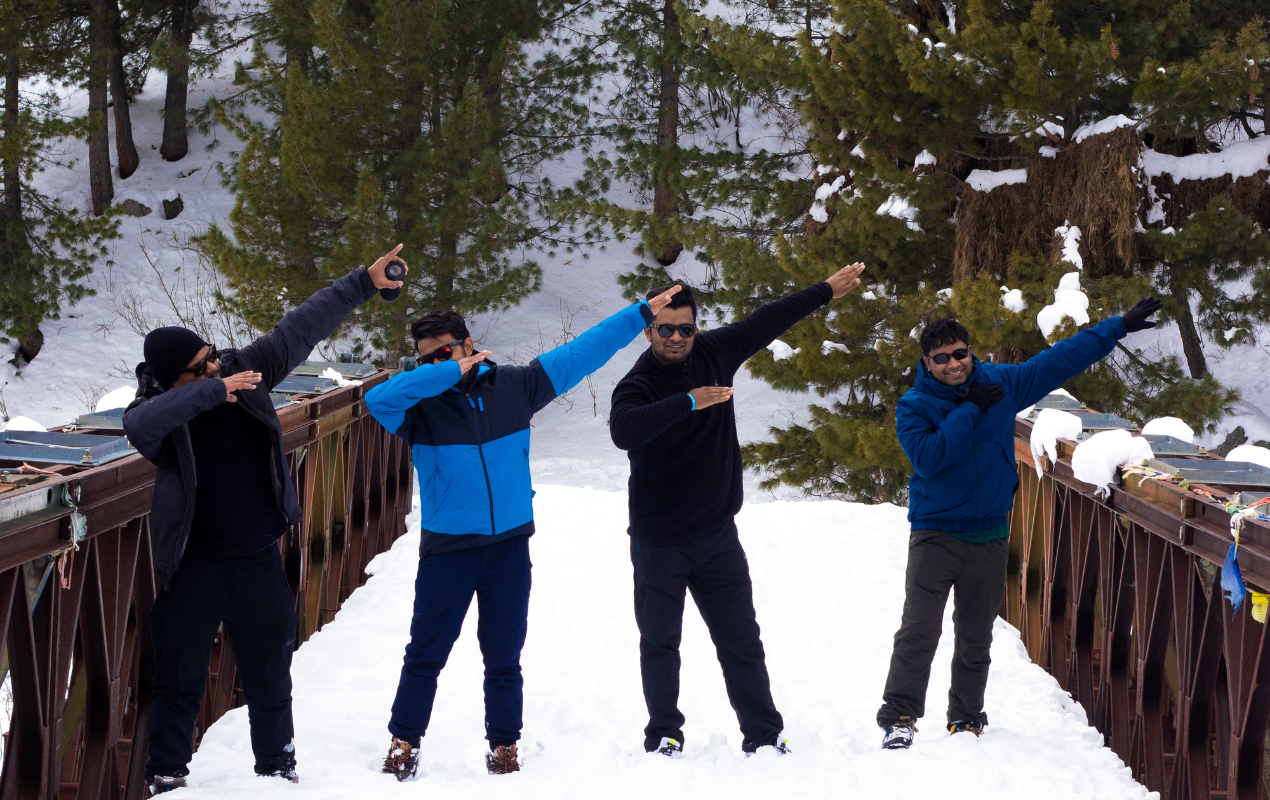
Winter Spiti Trip Christmas
Details
Inclusions
Safe Travel
Flexible Cancellation
Easy EMI
Certified Captains
24/7 Support
Overview
Spiti Valley in Winters is truly a Christmas paradise personified. The whole valley is covered in a thick tapestry of snow, seemingly spreading to a vast expanse until one can’t tell where the land ends and the sky full of ivory clouds begin. For snow fanatics and people who’d rather be taking a stroll under the winter sun than being huddled in blankets, Spiti is nothing less than a dream, especially during the Christmas season. A dream that feels more than real when the chilly breeze fills your heart with warmth from within. What makes the Winter Spiti trip perfect is that you get to experience Spiti the way it’s meant to be experienced, with snow under your boot and mountains overlooking you in all their glory. Although the temperature drops below -30 degrees and heavy snow makes it almost impossible for people to transport freely, the locals are happy because the more it snows, the higher the chance for them to get more water when the cropping season begins.
There is a reason why a Spiti trip in winter is on every traveler's bucket list, and it’s not just because of its mesmerizing natural beauty but also because of the serenity the valley provides, the monasteries that have been there for thousands of years, and of course the wonderful people who make you feel at home with their amazing hospitality. It’s no secret that the best route for Spiti Valley in winter is via Shimla, where the roads can be lined with festive decorations during the Christmas season. The route stays open throughout the year and only closes if there is heavy snowfall. Apart from that, you get to glimpse the beautiful valleys and meadows en route while driving on the Hindustan-Tibet highway, which is an amazing experience on its own. Not to mention that the gradual ascend towards the higher altitude through this road makes your body adapt to the conditions easily and with comfort. This real trip to Spiti Valley starts when we reach Chitkul, the last village in India, which is considered to have the cleanest air in the country. It is after spending a night in this village that you will realize how you’ve left the city life behind, and the rest of the days that you spend here will be filled with the joy of Christmas, without any unwanted noise reaching your ears. Instead, there will only be the sound of chilly winds blowing and snow crunching underfoot.
As we move more toward Kalpa, you will start getting mesmerized by the views, reminiscent of a Christmas postcard. En route, the town of Reckong Peo will beckon you closer with its apple orchards and picturesque backdrop of the Great Himalayan ranges. Once we reach Kalpa, the heavenly landscape of the Kinnaur Kailash peaks, the Sutlej river flowing through the gorges, and the patches of Chilgoza forests covered with snowflakes will make your heads turn in delight, as if nature itself is celebrating the spirit of Christmas. Kalpa is known for its breathtaking views, but it’s also popular for the 3000-year-old Kalpa Monastery and the suicide point, named so because of the narrow roads with a rugged mountain on one side and a cliff on the other side. The suicide point also serves as a vantage point for a panoramic view of the Kinnaur ranges, which will be covered entirely in snow, adding more charm to its beauty. However, being on such a high road with no support does make your heart beat ten times faster, and the rush of adrenaline mixed with the soothing view is surely an experience that not many people are lucky enough to have. The trail to our next spot has the village of Khab as the perfect halt. The village serves as the union site between the Sutlej and Spiti rivers, and once you reach here, you won’t be able to leave it behind without carrying some part of it with you in your heart.
Located amidst the trans-Himalayan ranges and home to a thousand-year-old monastery and many Buddhist stupas that have stood the test of time gracefully is Nako. Overlooked by Reo Purgyal, this village is a perfect spot for those who are looking for some peace of mind. A visit to the serene Nako Lake and a chance to visit the Nako Monastery are experiences that you simply can’t miss out on in this Spiti Valley winter trip, especially during the New Year festivities. On our way to our next stop, we will be visiting some of the monasteries in Spiti, which serve as the foundation of the decade-old heritage and culture of the valley. The Tabo Monastery, situated on the bank of the Spiti river, is the oldest monastery, dating back to 996 C.E. The wooden structures and thangka paintings that one can find inside the monastery have faded over time but still grace the monastery with their significance. A national historic treasure, the monastery is protected by the ASI.
Originally built as a fort on the Central Tibetan pattern and overlooking the union of the Spiti and Pin rivers, the Dhankar monastery has aspects that date back to the 12th century. Upon reaching Kaza, we will finally be able to immerse ourselves in the magic of the winter wonderland that is Spiti Valley. There will be no sign of the barren terrains or the green canopies, as everything will be covered in a sheet of ivory snow, and it’s only when you witness the abundance of snow everywhere—from underneath your foot to the faraway mountains you see—that you will finally understand why there is no better place to celebrate the New Year than Spiti Valley during winters.
We will take you to all the best places in Spiti during our sightseeing tour and make sure that you take some essence of Spiti with you when you go back. Firstly, we will be visiting Kye Gompa, more commonly known as the Key Monastery, which sits proudly on top of a hill at an altitude of 13,668 ft. It is not only the oldest as well as the largest monastery in Spiti Valley but also serves as the training center for the Lamas. The walls of the monasteries are covered with colorful murals and paintings. There are also collections of books, murals, and even images of Buddha that the monastery has safely preserved.
The highest bridge in Asia and another popular attraction of Spiti Valley is the Chicham Bridge, which provides a view of a deep gorge running through the steep valley under it. Another tiny hamlet and easily one of the most beautiful villages of Spiti is Komic, a tiny hamlet where life slows down as if to take all the weight off of your shoulders, perfect for reflecting on the year gone by during the New Year celebrations. The highest post office in the world, from where you can send letters to your loved ones, is Hikkim, and one of the many reasons why people visit this one spot is because of the nostalgia and old-school charm attached to it.
Last but not least, we will take you to the land of fossils, Langza, which perhaps wouldn’t be the hotspot of eager travelers exploring the hidden gems of Spiti if not for the tall Buddha statue that sits atop a hill, seemingly overlooking the village to protect it, as the locals believe. Winters are the best time to visit Spiti Valley because it’s only when the valley is covered in snow that you get to witness its magic in all its glory. The experience of a Spiti Valley winter trip is unmatched, which is why the best time to Spiti for a winter trip will be the months of November, December, and February to May.
Join us for Christmas and New Year Celebrations, with 2+2 Snacks, Music, Cake, and a Bonfire (weather dependent) to make this trip even more special!
Gallery

.jpg)


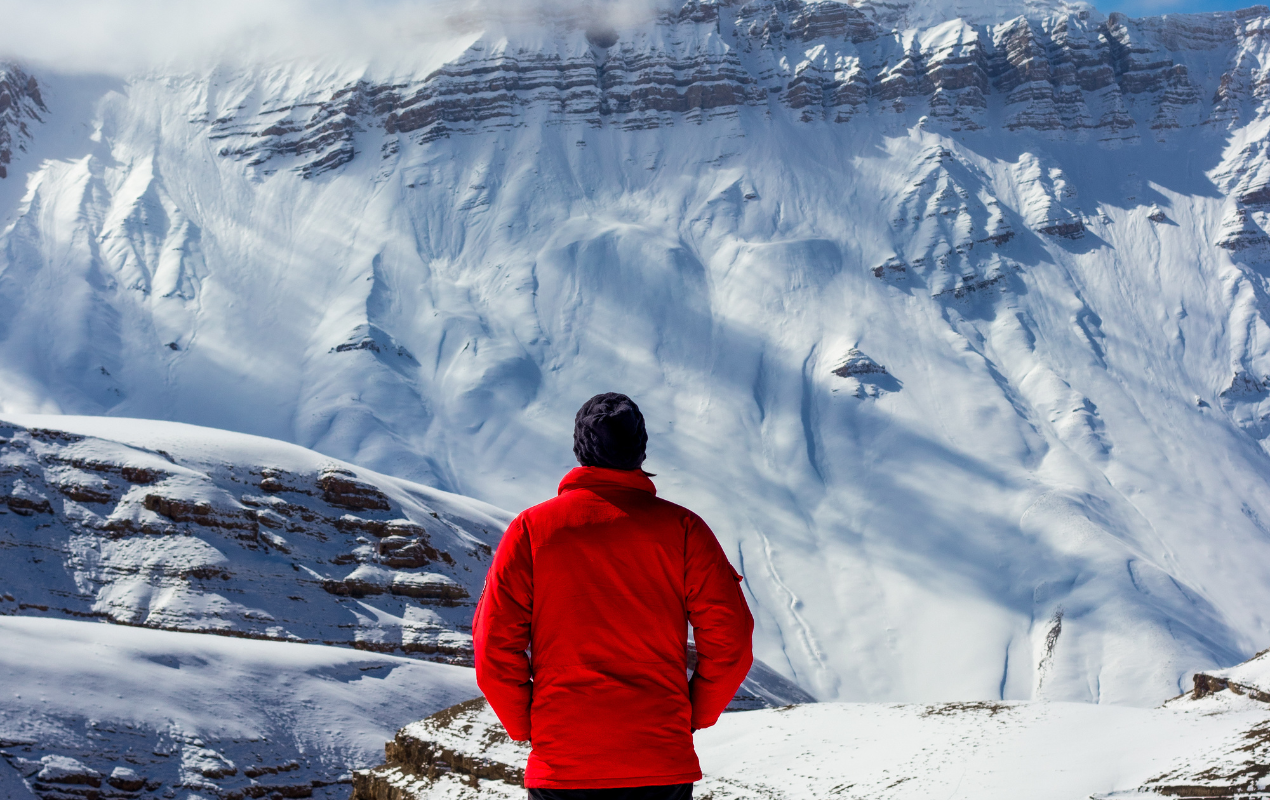
Itinerary
1
Day
Delhi to Shimla | Overnight Journey
2
Day
Shimla to Chitkul/Sangla (225 Kms)
3
Day
Chitkul/Sangla to Kalpa (50 Kms)
4
Day
Kalpa to Nako (100 Kms)
5
Day
Nako to Kaza (110 Kms)
6
Day
Spiti Sightseeing Day (Komic, Hikkim, Langza, Key, Chicham)
7
Day
Kaza to Kalpa (200 Kms)
8
Day
Kalpa to Shimla (222 Kms)
9
Day
Delhi Arrival | Tour Ends
Age Limit (Trip Wise)
Weekend
Getaways
18-38
Himalayan
Treks
18-48
Backpacking
Trips
18-40
Biking
Trips
18-45
Customized
Trips
No Limit
Inclusions & Exclusions
| Inclusions | Exclusions |
Special Inclusions: Christmas New Year Celebrations, 2+2 Snacks, Music, Cake and Bonfire (weather dependent) AC Volvo Bus from Delhi to Shimla and return. Accommodations on sharing basis as per itinerary. Meal Plan: MAP Plan (Total 12 Meals - 1 Meal on Day 2 (D) + 2 Meals on Day 3 (B+D) + 2 Meals on Day 4 (B+D) + 2 Meals on Day 5 (B+D) + 2 Meals on Day 6 (B+D) + 2 Meals on Day 7 (B+D) + 1 Meal on Day 8 (B) ) An experienced Trip Lead will be present at all times during the tour. Mechanical Support All permits Required Travel Insurance* First Aid Kits Oxygen Cylinders Oximeter | 5% GST Early check-in (Before 1:00 PM) & Late Check-out (After 11:00 AM) at the hotel. Any additional expenses of personal nature. Additional accommodation/food costs incurred due to any travel delay. Any lunch and other meals not mentioned in Package Inclusions. Any Airfare / Rail fare other than what is mentioned in “Inclusions” or any type of transportation. Parking and monument entry fees during sightseeing. Additional Costs due to Flight Cancellations, Landslides, Roadblocks, and other natural calamities. Any other services not specified above in inclusions. |
Cancellation Policy
| Upto 30 days | 29-21 days | 21-15 days | 14-0 days | |
| Batch Shifting | ||||
| Cancellation Charge | Free Cancellation | 25% of the Trip Amount | 50% of the Trip Amount | 100% of the Trip Amount |
| Booking Amount | Refunded in mode of Credit Note | Adjusted in Refund Deduction | Adjusted in Refund Deduction | No Refund |
| Remaining Amount | Full Refund (minus) booking amount | Refund (minus) 25% of the trip amount | Refund (minus) 50% of the trip amount | No Refund |
Payment Policy
| Upto 30 days | 29-21 days | 20-15 days | 14-7 days | |
|---|---|---|---|---|
| Booking Amount | ||||
| 50% Payment | Optional | Compulsory | ||
| 75% Payment | Optional | Optional | Compulsory | |
| 100% Payment | Optional | Optional | Optional | Compulsory |
Things To Pack
Rucksack:
You must pick a good quality backpack with a comfortable fit and straps that won’t give you shoulder pain. You can check out your nearest Decathlon store for a good trekking backpack.
You must pick a good quality backpack with a comfortable fit and straps that won’t give you shoulder pain. You can check out your nearest Decathlon store for a good trekking backpack.
Day Bag / Day Pack:
When you head towards the summit, you are required to carry only a few necessary items and for that, you need a day backpack as you will leave your bigger one on the campsite.
When you head towards the summit, you are required to carry only a few necessary items and for that, you need a day backpack as you will leave your bigger one on the campsite.
Hiking Shoes :
Durable footwear designed for rugged terrains.
Durable footwear designed for rugged terrains.
Floaters or Sandals:
Although the entire trek requires a good quality shoe, you still need to let your feet breathe to avoid chafing and blisters. When you are at the camp, a good pair of sandals and floaters will help you to move freely.
Although the entire trek requires a good quality shoe, you still need to let your feet breathe to avoid chafing and blisters. When you are at the camp, a good pair of sandals and floaters will help you to move freely.
Tees / Tshirts:
You must keep at least three pairs of quick dry tees so that you can wash them in between stops for proper hygiene.
You must keep at least three pairs of quick dry tees so that you can wash them in between stops for proper hygiene.
Poncho:
A poncho is an evolved form of a raincoat that provides coverage to your body as well as your bag and ensures total water protection from rain.
A poncho is an evolved form of a raincoat that provides coverage to your body as well as your bag and ensures total water protection from rain.
Quick Dry Towel:
A quick dry towel will help in maintaining proper hygiene. It must dry quickly because the wet fabric will only increase the chance of bacterial growth.
A quick dry towel will help in maintaining proper hygiene. It must dry quickly because the wet fabric will only increase the chance of bacterial growth.
Sanitizer:
Essential for maintaining cleanliness while trekking.
Essential for maintaining cleanliness while trekking.
Sun Cap / Hat:
A lightweight sun cap with side flaps is perfect to keep your head cool and avoid sunburns on a sunny day.
A lightweight sun cap with side flaps is perfect to keep your head cool and avoid sunburns on a sunny day.
Sunscreen SPF 40+:
To avoid sunburns and chafing, you need to put on sunscreen as well as cold cream.
To avoid sunburns and chafing, you need to put on sunscreen as well as cold cream.
Water Bottle (Re-usable):
Hydration is extremely important when it comes to trekking. Carrying a water bottle that you can refill with Himalayan water is a must.
Hydration is extremely important when it comes to trekking. Carrying a water bottle that you can refill with Himalayan water is a must.
Personal Toiletries:
A bag with all your essentials including napkins, toothpaste, sanitizers, paper soap, etc should be carried in a ziplock bag.
A bag with all your essentials including napkins, toothpaste, sanitizers, paper soap, etc should be carried in a ziplock bag.
Personal Medication / First Aid:
A few cuts and bruises are almost inevitable when you are on a trek so carrying a medical kit with bandages, Dettol, etc is necessary.
A few cuts and bruises are almost inevitable when you are on a trek so carrying a medical kit with bandages, Dettol, etc is necessary.
Sun Glasses / Reading Glasses:
Photochromatic glasses are specs that are designed to transform into anti-glare shades depending upon exposure to the sun. They are good when it comes to eye protection but one can also opt for clip-on glasses etc.
Photochromatic glasses are specs that are designed to transform into anti-glare shades depending upon exposure to the sun. They are good when it comes to eye protection but one can also opt for clip-on glasses etc.
Charger:
To keep your electronic devices powered during the trip.
To keep your electronic devices powered during the trip.
Power Bank:
Ensures your devices stay charged when there are no outlets.
Ensures your devices stay charged when there are no outlets.
Personal Documents & ID's:
Identification proofs like Aadhar Card, Drivers License.
Identification proofs like Aadhar Card, Drivers License.
Laundry Bag (Waterproof):
In case your clothes get wet or your garments don’t dry, you can carry them in polythene. However, make sure that all the plastic that you are carrying into the woods leaves with you. Don’t litter in the mountains.
In case your clothes get wet or your garments don’t dry, you can carry them in polythene. However, make sure that all the plastic that you are carrying into the woods leaves with you. Don’t litter in the mountains.
Track Pants:
A good pair of track pants made of polyester will let your skin breathe. They’re lightweight, dry easily, and comfortable to walk around in. You can easily avoid chafing and rashes by investing in a good pair of track pants.
A good pair of track pants made of polyester will let your skin breathe. They’re lightweight, dry easily, and comfortable to walk around in. You can easily avoid chafing and rashes by investing in a good pair of track pants.
Trekking Shoes:
A good trekking shoe is comfortable, provides ankle support, and has a good grip as well. They shouldn’t be chunky, instead, they should be lightweight and sturdy.
A good trekking shoe is comfortable, provides ankle support, and has a good grip as well. They shouldn’t be chunky, instead, they should be lightweight and sturdy.
Cotton Socks:
Cotton socks are extremely comfortable to move around in and are lightweight as well which is why you can always count on a good pair of cotton socks while trekking. However, keep in mind to change them and avoid wearing them when they are wet.
Cotton socks are extremely comfortable to move around in and are lightweight as well which is why you can always count on a good pair of cotton socks while trekking. However, keep in mind to change them and avoid wearing them when they are wet.
Woolen Socks:
A good pair of woolen socks, especially merino, are comfortable, limit odors and provide adequate insulation from the cold so you can wear them at night.
A good pair of woolen socks, especially merino, are comfortable, limit odors and provide adequate insulation from the cold so you can wear them at night.
Woolen Gloves:
Insulated gloves help in maintaining proper body heat in your hands and also provide a better grasp on trekking poles.
Insulated gloves help in maintaining proper body heat in your hands and also provide a better grasp on trekking poles.
Main Jacket:
It’s emphasized that you need to carry proper layers so you can avoid getting cold which is why you need to carry a heavy jacket that you can put on over your other clothes.
It’s emphasized that you need to carry proper layers so you can avoid getting cold which is why you need to carry a heavy jacket that you can put on over your other clothes.
Woolen Cap:
A woolen cap will help prevent cold when you ascend to high altitude. You can also cover your ears to avoid any pain and discomfort you might face in them when going at high altitudes.
A woolen cap will help prevent cold when you ascend to high altitude. You can also cover your ears to avoid any pain and discomfort you might face in them when going at high altitudes.
Hoodie:
A versatile layering option for various temperatures.
A versatile layering option for various temperatures.
Scarf / Balaclava:
Along with sun rays and chilly winds, you also get hit by dirt and grime during treks which is why it's important to carry a scarf or balaclava so you can cover your face when needed.
Along with sun rays and chilly winds, you also get hit by dirt and grime during treks which is why it's important to carry a scarf or balaclava so you can cover your face when needed.
Head Lamp:
You can’t rely on moonlight when you are in the mountains. A torch or even a headlamp with a fresh pair of batteries is always a good idea to bring along.
You can’t rely on moonlight when you are in the mountains. A torch or even a headlamp with a fresh pair of batteries is always a good idea to bring along.
Trekking Pole:
The trekking pole assists in more than one way. It saves energy while also providing stability and helps you to maintain proper balance.
The trekking pole assists in more than one way. It saves energy while also providing stability and helps you to maintain proper balance.
Camera:
This should be obvious. To make sure that you get to capture all the great moments from your trek. Make sure that you have enough storage and some extra batteries as well.
This should be obvious. To make sure that you get to capture all the great moments from your trek. Make sure that you have enough storage and some extra batteries as well.
Riding Gear:
If your trip involves biking or motorcycling.
If your trip involves biking or motorcycling.
Moisturiser & Cold Cream:
To avoid sunburns and chafing, you need to put on sunscreen as well as cold cream.
To avoid sunburns and chafing, you need to put on sunscreen as well as cold cream.
Lip Balm:
Your lips can become chapped due to the harsh cold winds so it's important to keep them moisturized.
Your lips can become chapped due to the harsh cold winds so it's important to keep them moisturized.
Sanitary Pads:
Essential for feminine hygiene.
Essential for feminine hygiene.
Insect Repellent:
Guards against pesky bugs and insects.
Guards against pesky bugs and insects.
Cash:
Emergency funds for unexpected situations.
Emergency funds for unexpected situations.
Thermals:
Thermal is a piece of garment that helps in keeping your body warm in cold temperatures. It is a necessary item that you need when going on a high-altitude trek.
Thermal is a piece of garment that helps in keeping your body warm in cold temperatures. It is a necessary item that you need when going on a high-altitude trek.
Snacks / Dryfruits / Energy Bar:
Provides quick energy on the go.
Provides quick energy on the go.
Positive Attitude:
The most important item for a successful trek or trip, keeping your spirits high and adaptable to the challenges of the journey.
The most important item for a successful trek or trip, keeping your spirits high and adaptable to the challenges of the journey.
REVIEWS
What our Clients Say About Us
blogs
Our Blogs
TRIPS
Related Trips


.jpg)


Winter Spiti Trip Christmas
Details
Inclusions
Safe Travel
Flexible Cancellation
Easy EMI
Certified Captains
24/7 Support
Overview
Spiti Valley in Winters is truly a Christmas paradise personified. The whole valley is covered in a thick tapestry of snow, seemingly spreading to a vast expanse until one can’t tell where the land ends and the sky full of ivory clouds begin. For snow fanatics and people who’d rather be taking a stroll under the winter sun than being huddled in blankets, Spiti is nothing less than a dream, especially during the Christmas season. A dream that feels more than real when the chilly breeze fills your heart with warmth from within. What makes the Winter Spiti trip perfect is that you get to experience Spiti the way it’s meant to be experienced, with snow under your boot and mountains overlooking you in all their glory. Although the temperature drops below -30 degrees and heavy snow makes it almost impossible for people to transport freely, the locals are happy because the more it snows, the higher the chance for them to get more water when the cropping season begins.
There is a reason why a Spiti trip in winter is on every traveler's bucket list, and it’s not just because of its mesmerizing natural beauty but also because of the serenity the valley provides, the monasteries that have been there for thousands of years, and of course the wonderful people who make you feel at home with their amazing hospitality. It’s no secret that the best route for Spiti Valley in winter is via Shimla, where the roads can be lined with festive decorations during the Christmas season. The route stays open throughout the year and only closes if there is heavy snowfall. Apart from that, you get to glimpse the beautiful valleys and meadows en route while driving on the Hindustan-Tibet highway, which is an amazing experience on its own. Not to mention that the gradual ascend towards the higher altitude through this road makes your body adapt to the conditions easily and with comfort. This real trip to Spiti Valley starts when we reach Chitkul, the last village in India, which is considered to have the cleanest air in the country. It is after spending a night in this village that you will realize how you’ve left the city life behind, and the rest of the days that you spend here will be filled with the joy of Christmas, without any unwanted noise reaching your ears. Instead, there will only be the sound of chilly winds blowing and snow crunching underfoot.
As we move more toward Kalpa, you will start getting mesmerized by the views, reminiscent of a Christmas postcard. En route, the town of Reckong Peo will beckon you closer with its apple orchards and picturesque backdrop of the Great Himalayan ranges. Once we reach Kalpa, the heavenly landscape of the Kinnaur Kailash peaks, the Sutlej river flowing through the gorges, and the patches of Chilgoza forests covered with snowflakes will make your heads turn in delight, as if nature itself is celebrating the spirit of Christmas. Kalpa is known for its breathtaking views, but it’s also popular for the 3000-year-old Kalpa Monastery and the suicide point, named so because of the narrow roads with a rugged mountain on one side and a cliff on the other side. The suicide point also serves as a vantage point for a panoramic view of the Kinnaur ranges, which will be covered entirely in snow, adding more charm to its beauty. However, being on such a high road with no support does make your heart beat ten times faster, and the rush of adrenaline mixed with the soothing view is surely an experience that not many people are lucky enough to have. The trail to our next spot has the village of Khab as the perfect halt. The village serves as the union site between the Sutlej and Spiti rivers, and once you reach here, you won’t be able to leave it behind without carrying some part of it with you in your heart.
Located amidst the trans-Himalayan ranges and home to a thousand-year-old monastery and many Buddhist stupas that have stood the test of time gracefully is Nako. Overlooked by Reo Purgyal, this village is a perfect spot for those who are looking for some peace of mind. A visit to the serene Nako Lake and a chance to visit the Nako Monastery are experiences that you simply can’t miss out on in this Spiti Valley winter trip, especially during the New Year festivities. On our way to our next stop, we will be visiting some of the monasteries in Spiti, which serve as the foundation of the decade-old heritage and culture of the valley. The Tabo Monastery, situated on the bank of the Spiti river, is the oldest monastery, dating back to 996 C.E. The wooden structures and thangka paintings that one can find inside the monastery have faded over time but still grace the monastery with their significance. A national historic treasure, the monastery is protected by the ASI.
Originally built as a fort on the Central Tibetan pattern and overlooking the union of the Spiti and Pin rivers, the Dhankar monastery has aspects that date back to the 12th century. Upon reaching Kaza, we will finally be able to immerse ourselves in the magic of the winter wonderland that is Spiti Valley. There will be no sign of the barren terrains or the green canopies, as everything will be covered in a sheet of ivory snow, and it’s only when you witness the abundance of snow everywhere—from underneath your foot to the faraway mountains you see—that you will finally understand why there is no better place to celebrate the New Year than Spiti Valley during winters.
We will take you to all the best places in Spiti during our sightseeing tour and make sure that you take some essence of Spiti with you when you go back. Firstly, we will be visiting Kye Gompa, more commonly known as the Key Monastery, which sits proudly on top of a hill at an altitude of 13,668 ft. It is not only the oldest as well as the largest monastery in Spiti Valley but also serves as the training center for the Lamas. The walls of the monasteries are covered with colorful murals and paintings. There are also collections of books, murals, and even images of Buddha that the monastery has safely preserved.
The highest bridge in Asia and another popular attraction of Spiti Valley is the Chicham Bridge, which provides a view of a deep gorge running through the steep valley under it. Another tiny hamlet and easily one of the most beautiful villages of Spiti is Komic, a tiny hamlet where life slows down as if to take all the weight off of your shoulders, perfect for reflecting on the year gone by during the New Year celebrations. The highest post office in the world, from where you can send letters to your loved ones, is Hikkim, and one of the many reasons why people visit this one spot is because of the nostalgia and old-school charm attached to it.
Last but not least, we will take you to the land of fossils, Langza, which perhaps wouldn’t be the hotspot of eager travelers exploring the hidden gems of Spiti if not for the tall Buddha statue that sits atop a hill, seemingly overlooking the village to protect it, as the locals believe. Winters are the best time to visit Spiti Valley because it’s only when the valley is covered in snow that you get to witness its magic in all its glory. The experience of a Spiti Valley winter trip is unmatched, which is why the best time to Spiti for a winter trip will be the months of November, December, and February to May.
Join us for Christmas and New Year Celebrations, with 2+2 Snacks, Music, Cake, and a Bonfire (weather dependent) to make this trip even more special!
Itinerary
1
Day
Delhi to Shimla | Overnight Journey
2
Day
Shimla to Chitkul/Sangla (225 Kms)
3
Day
Chitkul/Sangla to Kalpa (50 Kms)
4
Day
Kalpa to Nako (100 Kms)
5
Day
Nako to Kaza (110 Kms)
6
Day
Spiti Sightseeing Day (Komic, Hikkim, Langza, Key, Chicham)
7
Day
Kaza to Kalpa (200 Kms)
8
Day
Kalpa to Shimla (222 Kms)
9
Day
Delhi Arrival | Tour Ends
Age Limit (Trip Wise)
Weekend
Getaways
18-38
Himalayan
Treks
18-48
Backpacking
Trips
18-40
Biking
Trips
18-45
Customized
Trips
No Limit
Pricing
Select Occupancy
+5% GST *
Special Inclusions: Christmas New Year Celebrations, 2+2 Snacks, Music, Cake and Bonfire (weather dependent) AC Volvo Bus from Delhi to Shimla and return. Accommodations on sharing basis as per itinerary. Meal Plan: MAP Plan (Total 12 Meals - 1 Meal on Day 2 (D) + 2 Meals on Day 3 (B+D) + 2 Meals on Day 4 (B+D) + 2 Meals on Day 5 (B+D) + 2 Meals on Day 6 (B+D) + 2 Meals on Day 7 (B+D) + 1 Meal on Day 8 (B) ) An experienced Trip Lead will be present at all times during the tour. Mechanical Support All permits Required Travel Insurance* First Aid Kits Oxygen Cylinders Oximeter |
Cancellation Policy
Credit Note :
The Booking Amount will be credited to your JW Profile which can be accessed by logging in to the website through your Email ID. Credit Notes issued have no date of expiry and can be used entirely in any of your future trips.
GST :
The Booking Amount will be credited to your JW Profile which can be accessed by logging in to the website through your Email ID. Credit Notes issued have no date of expiry and can be used entirely in any of your future trips.
Payment Policy
Things To Pack
Rucksack:
You must pick a good quality backpack with a comfortable fit and straps that won’t give you shoulder pain. You can check out your nearest Decathlon store for a good trekking backpack.
You must pick a good quality backpack with a comfortable fit and straps that won’t give you shoulder pain. You can check out your nearest Decathlon store for a good trekking backpack.
Day Bag / Day Pack:
When you head towards the summit, you are required to carry only a few necessary items and for that, you need a day backpack as you will leave your bigger one on the campsite.
When you head towards the summit, you are required to carry only a few necessary items and for that, you need a day backpack as you will leave your bigger one on the campsite.
Hiking Shoes :
Durable footwear designed for rugged terrains.
Durable footwear designed for rugged terrains.
Floaters or Sandals:
Although the entire trek requires a good quality shoe, you still need to let your feet breathe to avoid chafing and blisters. When you are at the camp, a good pair of sandals and floaters will help you to move freely.
Although the entire trek requires a good quality shoe, you still need to let your feet breathe to avoid chafing and blisters. When you are at the camp, a good pair of sandals and floaters will help you to move freely.
Tees / Tshirts:
You must keep at least three pairs of quick dry tees so that you can wash them in between stops for proper hygiene.
You must keep at least three pairs of quick dry tees so that you can wash them in between stops for proper hygiene.
Poncho:
A poncho is an evolved form of a raincoat that provides coverage to your body as well as your bag and ensures total water protection from rain.
A poncho is an evolved form of a raincoat that provides coverage to your body as well as your bag and ensures total water protection from rain.
Quick Dry Towel:
A quick dry towel will help in maintaining proper hygiene. It must dry quickly because the wet fabric will only increase the chance of bacterial growth.
A quick dry towel will help in maintaining proper hygiene. It must dry quickly because the wet fabric will only increase the chance of bacterial growth.
Sanitizer:
Essential for maintaining cleanliness while trekking.
Essential for maintaining cleanliness while trekking.
Sun Cap / Hat:
A lightweight sun cap with side flaps is perfect to keep your head cool and avoid sunburns on a sunny day.
A lightweight sun cap with side flaps is perfect to keep your head cool and avoid sunburns on a sunny day.
Sunscreen SPF 40+:
To avoid sunburns and chafing, you need to put on sunscreen as well as cold cream.
To avoid sunburns and chafing, you need to put on sunscreen as well as cold cream.
Water Bottle (Re-usable):
Hydration is extremely important when it comes to trekking. Carrying a water bottle that you can refill with Himalayan water is a must.
Hydration is extremely important when it comes to trekking. Carrying a water bottle that you can refill with Himalayan water is a must.
Personal Toiletries:
A bag with all your essentials including napkins, toothpaste, sanitizers, paper soap, etc should be carried in a ziplock bag.
A bag with all your essentials including napkins, toothpaste, sanitizers, paper soap, etc should be carried in a ziplock bag.
Personal Medication / First Aid:
A few cuts and bruises are almost inevitable when you are on a trek so carrying a medical kit with bandages, Dettol, etc is necessary.
A few cuts and bruises are almost inevitable when you are on a trek so carrying a medical kit with bandages, Dettol, etc is necessary.
Sun Glasses / Reading Glasses:
Photochromatic glasses are specs that are designed to transform into anti-glare shades depending upon exposure to the sun. They are good when it comes to eye protection but one can also opt for clip-on glasses etc.
Photochromatic glasses are specs that are designed to transform into anti-glare shades depending upon exposure to the sun. They are good when it comes to eye protection but one can also opt for clip-on glasses etc.
Charger:
To keep your electronic devices powered during the trip.
To keep your electronic devices powered during the trip.
Power Bank:
Ensures your devices stay charged when there are no outlets.
Ensures your devices stay charged when there are no outlets.
Personal Documents & ID's:
Identification proofs like Aadhar Card, Drivers License.
Identification proofs like Aadhar Card, Drivers License.
Laundry Bag (Waterproof):
In case your clothes get wet or your garments don’t dry, you can carry them in polythene. However, make sure that all the plastic that you are carrying into the woods leaves with you. Don’t litter in the mountains.
In case your clothes get wet or your garments don’t dry, you can carry them in polythene. However, make sure that all the plastic that you are carrying into the woods leaves with you. Don’t litter in the mountains.
Track Pants:
A good pair of track pants made of polyester will let your skin breathe. They’re lightweight, dry easily, and comfortable to walk around in. You can easily avoid chafing and rashes by investing in a good pair of track pants.
A good pair of track pants made of polyester will let your skin breathe. They’re lightweight, dry easily, and comfortable to walk around in. You can easily avoid chafing and rashes by investing in a good pair of track pants.
Trekking Shoes:
A good trekking shoe is comfortable, provides ankle support, and has a good grip as well. They shouldn’t be chunky, instead, they should be lightweight and sturdy.
A good trekking shoe is comfortable, provides ankle support, and has a good grip as well. They shouldn’t be chunky, instead, they should be lightweight and sturdy.
Cotton Socks:
Cotton socks are extremely comfortable to move around in and are lightweight as well which is why you can always count on a good pair of cotton socks while trekking. However, keep in mind to change them and avoid wearing them when they are wet.
Cotton socks are extremely comfortable to move around in and are lightweight as well which is why you can always count on a good pair of cotton socks while trekking. However, keep in mind to change them and avoid wearing them when they are wet.
Woolen Socks:
A good pair of woolen socks, especially merino, are comfortable, limit odors and provide adequate insulation from the cold so you can wear them at night.
A good pair of woolen socks, especially merino, are comfortable, limit odors and provide adequate insulation from the cold so you can wear them at night.
Woolen Gloves:
Insulated gloves help in maintaining proper body heat in your hands and also provide a better grasp on trekking poles.
Insulated gloves help in maintaining proper body heat in your hands and also provide a better grasp on trekking poles.
Main Jacket:
It’s emphasized that you need to carry proper layers so you can avoid getting cold which is why you need to carry a heavy jacket that you can put on over your other clothes.
It’s emphasized that you need to carry proper layers so you can avoid getting cold which is why you need to carry a heavy jacket that you can put on over your other clothes.
Woolen Cap:
A woolen cap will help prevent cold when you ascend to high altitude. You can also cover your ears to avoid any pain and discomfort you might face in them when going at high altitudes.
A woolen cap will help prevent cold when you ascend to high altitude. You can also cover your ears to avoid any pain and discomfort you might face in them when going at high altitudes.
Hoodie:
A versatile layering option for various temperatures.
A versatile layering option for various temperatures.
Scarf / Balaclava:
Along with sun rays and chilly winds, you also get hit by dirt and grime during treks which is why it's important to carry a scarf or balaclava so you can cover your face when needed.
Along with sun rays and chilly winds, you also get hit by dirt and grime during treks which is why it's important to carry a scarf or balaclava so you can cover your face when needed.
Head Lamp:
You can’t rely on moonlight when you are in the mountains. A torch or even a headlamp with a fresh pair of batteries is always a good idea to bring along.
You can’t rely on moonlight when you are in the mountains. A torch or even a headlamp with a fresh pair of batteries is always a good idea to bring along.
Trekking Pole:
The trekking pole assists in more than one way. It saves energy while also providing stability and helps you to maintain proper balance.
The trekking pole assists in more than one way. It saves energy while also providing stability and helps you to maintain proper balance.
Camera:
This should be obvious. To make sure that you get to capture all the great moments from your trek. Make sure that you have enough storage and some extra batteries as well.
This should be obvious. To make sure that you get to capture all the great moments from your trek. Make sure that you have enough storage and some extra batteries as well.
Riding Gear:
If your trip involves biking or motorcycling.
If your trip involves biking or motorcycling.
Moisturiser & Cold Cream:
To avoid sunburns and chafing, you need to put on sunscreen as well as cold cream.
To avoid sunburns and chafing, you need to put on sunscreen as well as cold cream.
Lip Balm:
Your lips can become chapped due to the harsh cold winds so it's important to keep them moisturized.
Your lips can become chapped due to the harsh cold winds so it's important to keep them moisturized.
Sanitary Pads:
Essential for feminine hygiene.
Essential for feminine hygiene.
Insect Repellent:
Guards against pesky bugs and insects.
Guards against pesky bugs and insects.
Cash:
Emergency funds for unexpected situations.
Emergency funds for unexpected situations.
Thermals:
Thermal is a piece of garment that helps in keeping your body warm in cold temperatures. It is a necessary item that you need when going on a high-altitude trek.
Thermal is a piece of garment that helps in keeping your body warm in cold temperatures. It is a necessary item that you need when going on a high-altitude trek.
Snacks / Dryfruits / Energy Bar:
Provides quick energy on the go.
Provides quick energy on the go.
Positive Attitude:
The most important item for a successful trek or trip, keeping your spirits high and adaptable to the challenges of the journey.
The most important item for a successful trek or trip, keeping your spirits high and adaptable to the challenges of the journey.
Similar Packages
REVIEWS
What our Clients Say About Us
blogs
Our Blogs
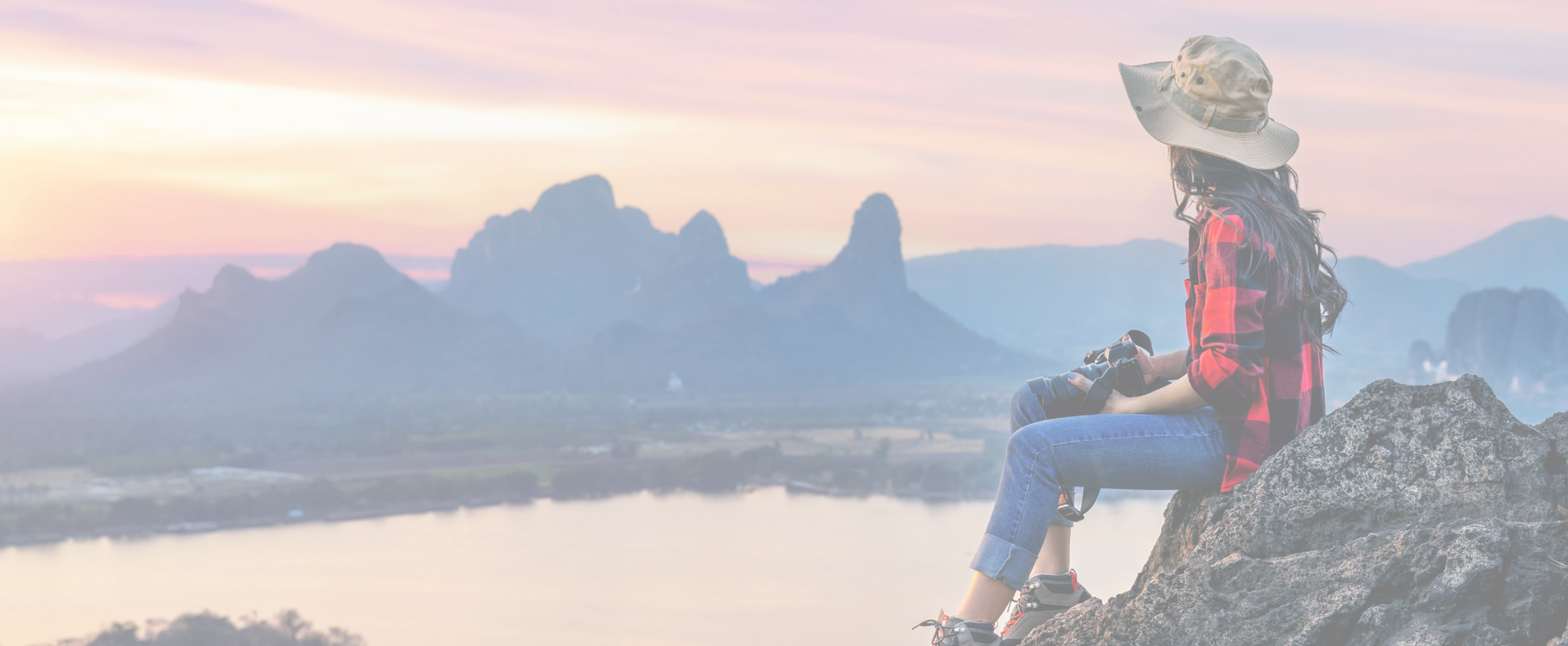
Newsletter
Sign up now!
Be the first one to know all about the Exciting Offers, Travel Updates and more.
Contact Us
B-42, 2nd Floor, Tower- B,
The Corenthum, Block A, Sector 62, Noida, Uttar Pradesh 201301
© 2015-2024 JustWravel Pvt. Ltd.

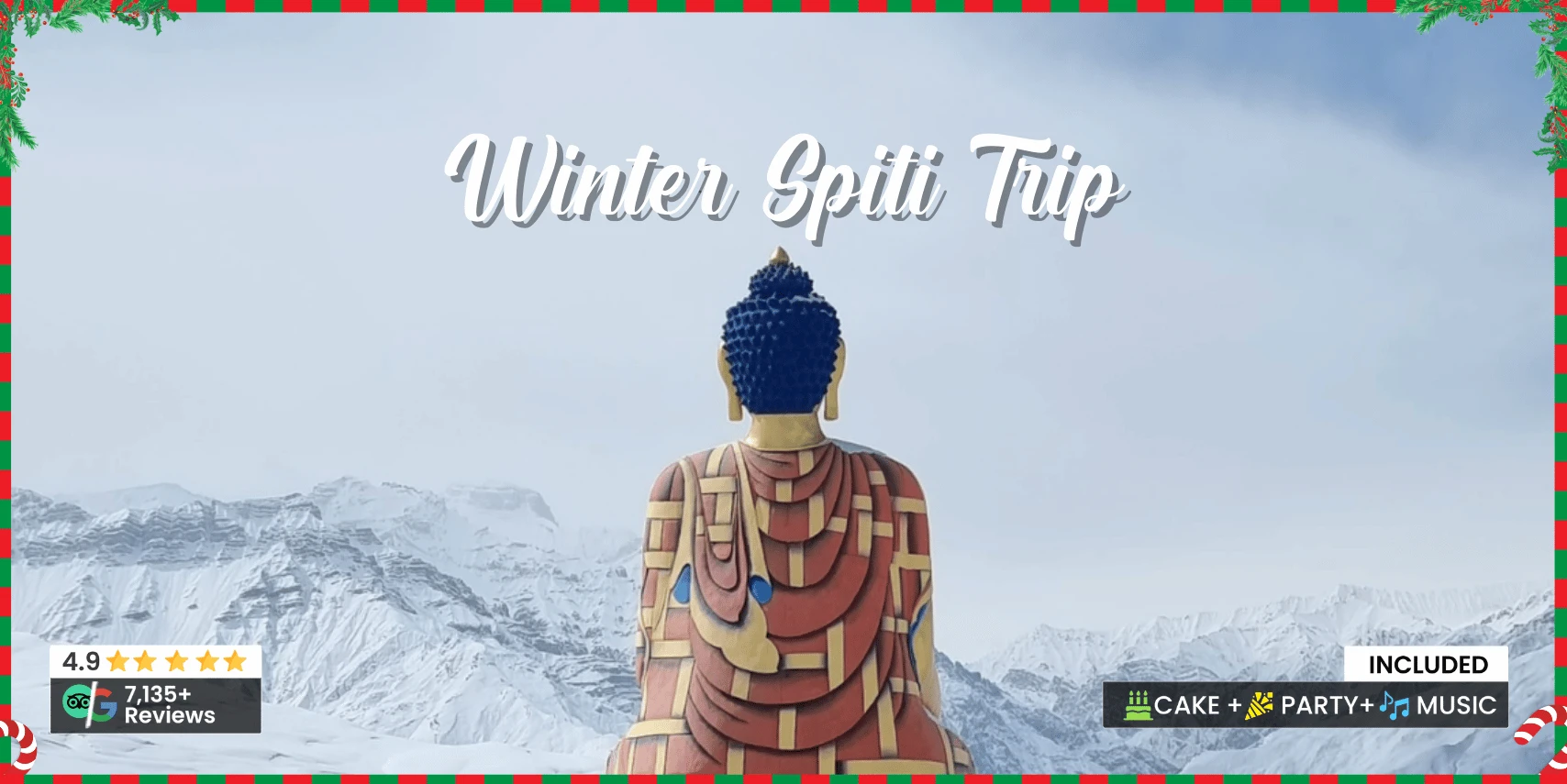







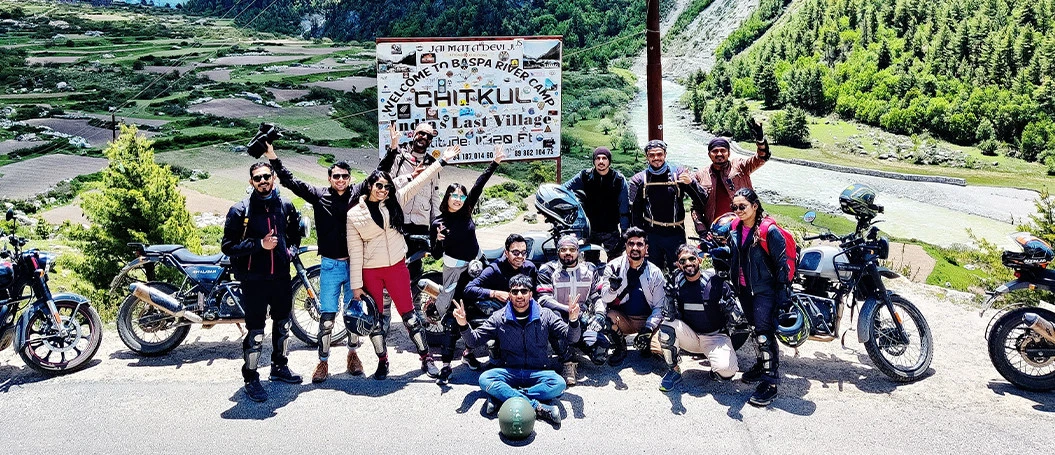








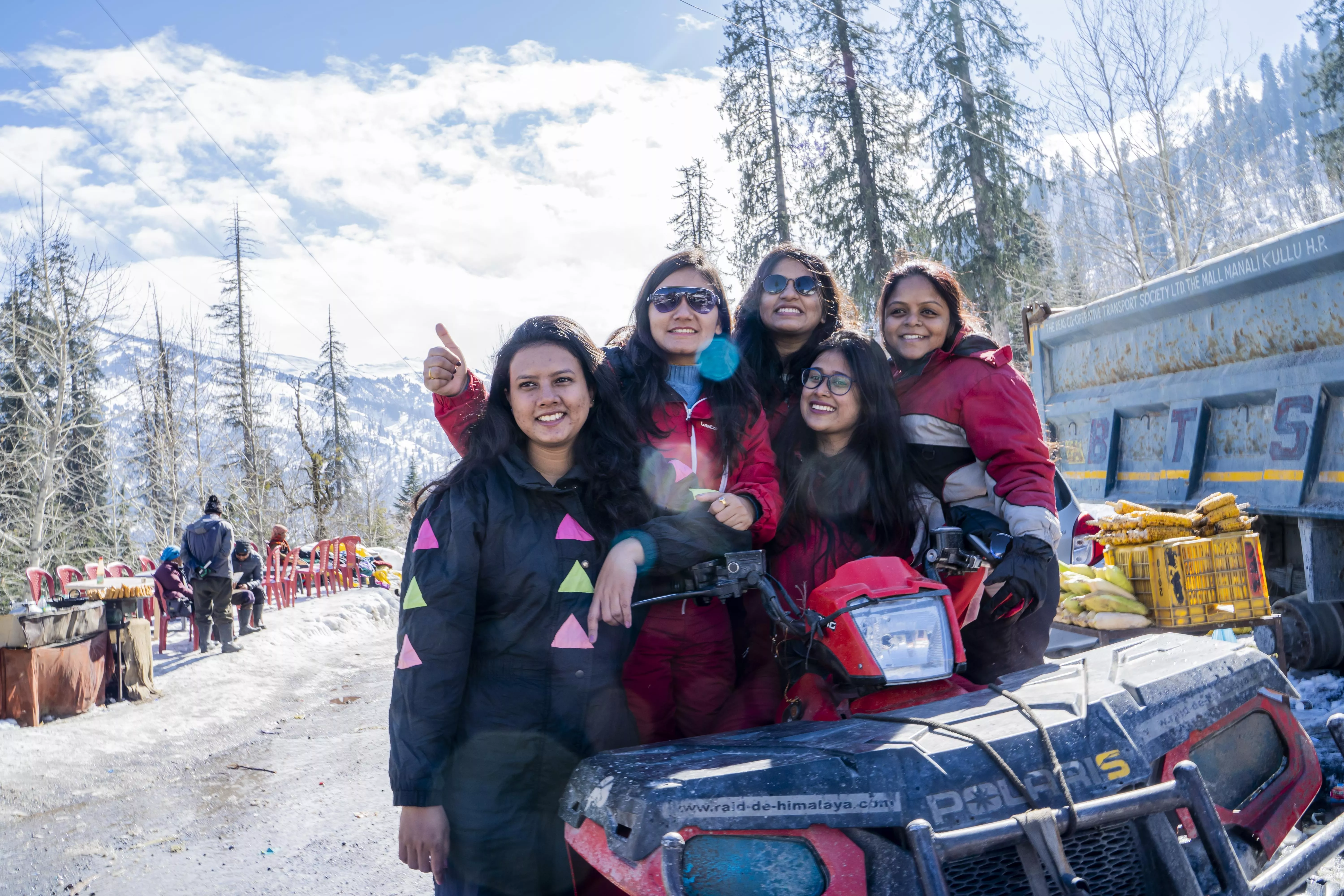


.jpg.webp)




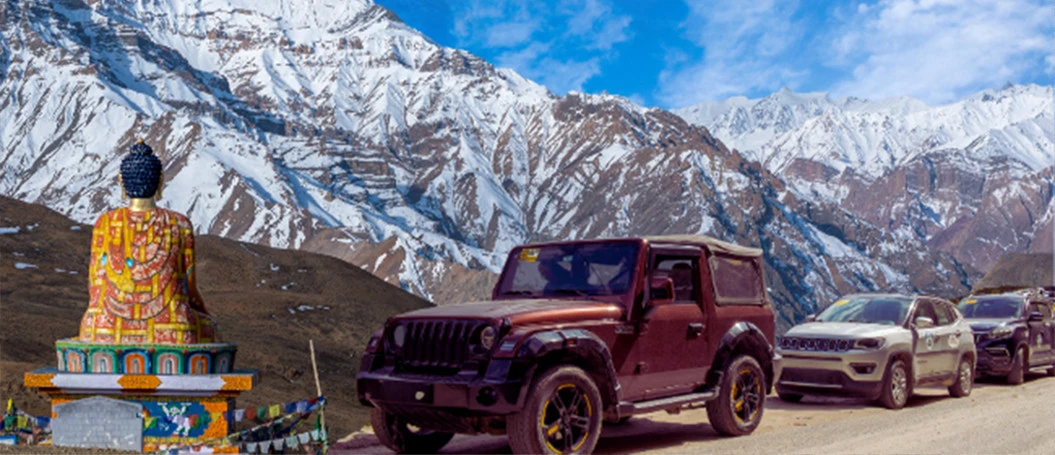

.jpg.webp)

.jpg.webp)





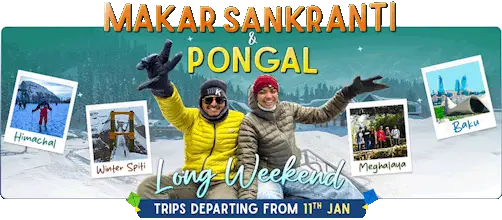


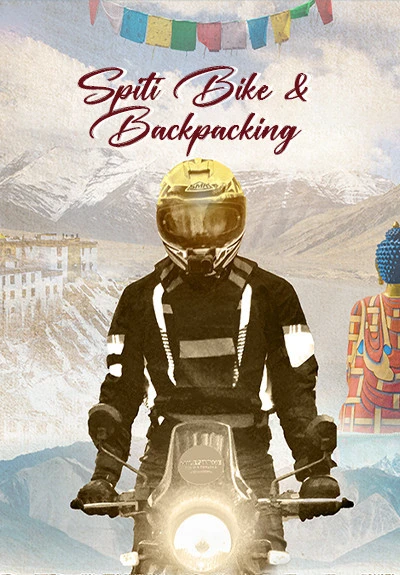















.png.webp)
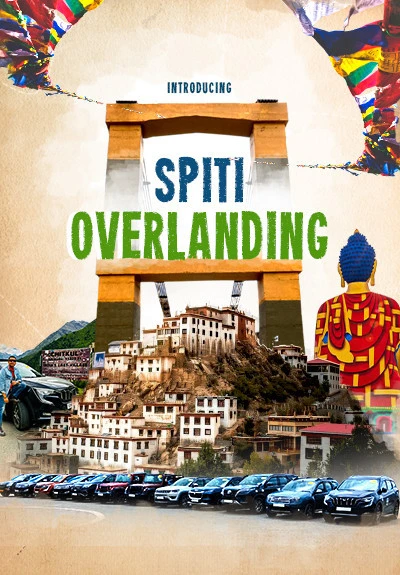

.jpg.webp)







